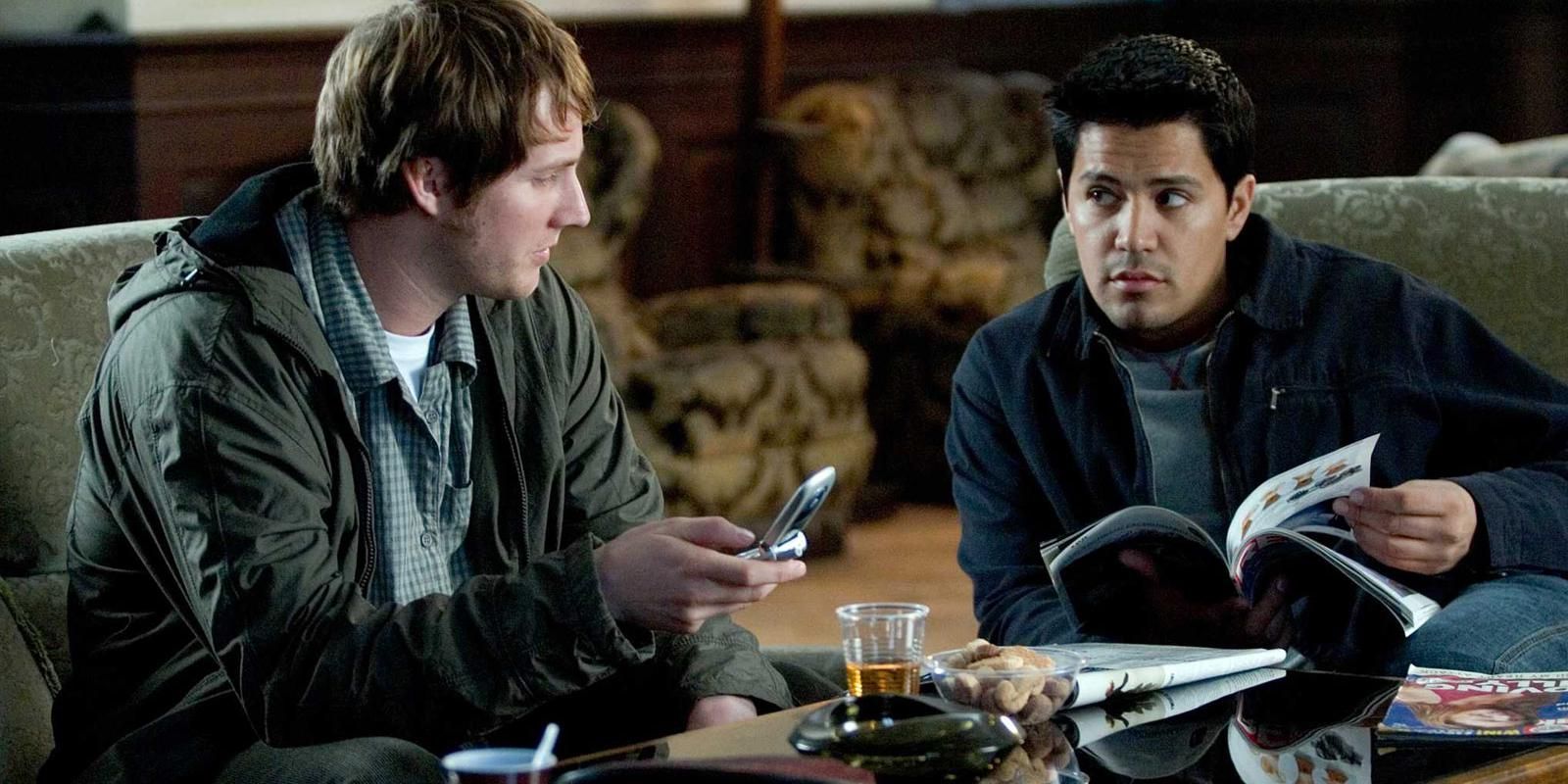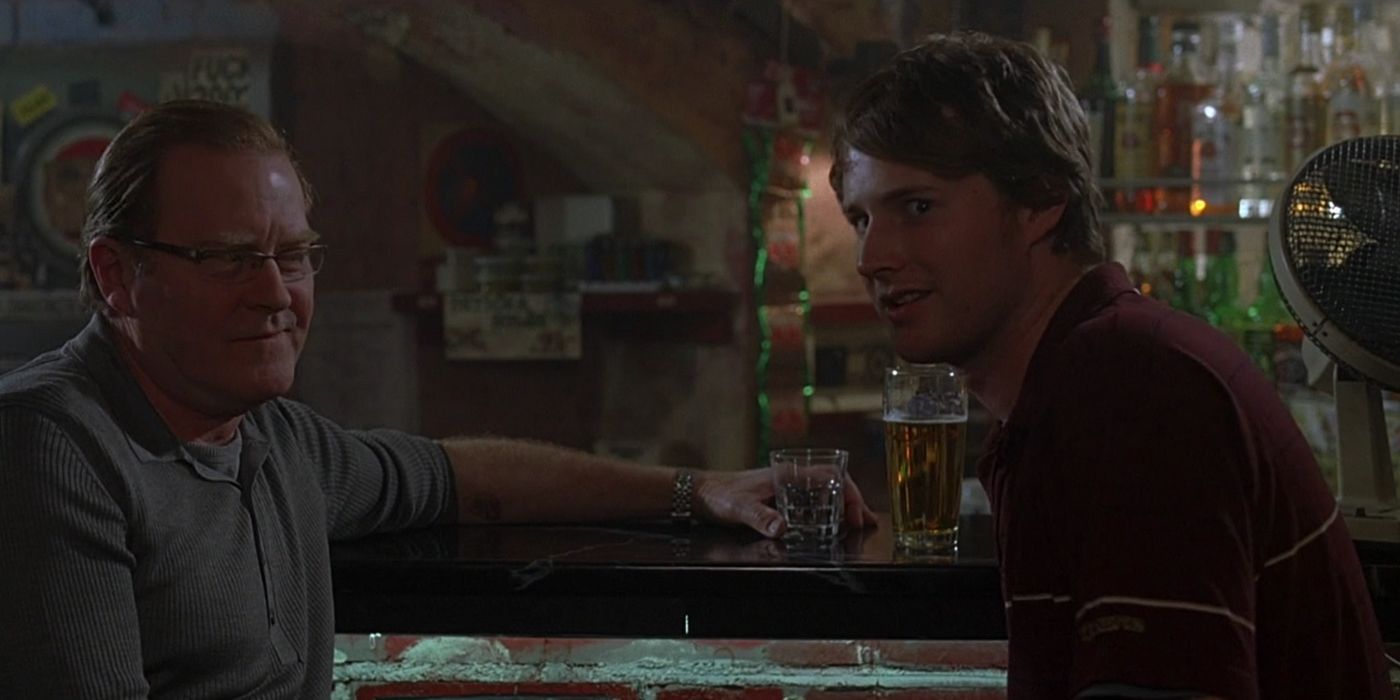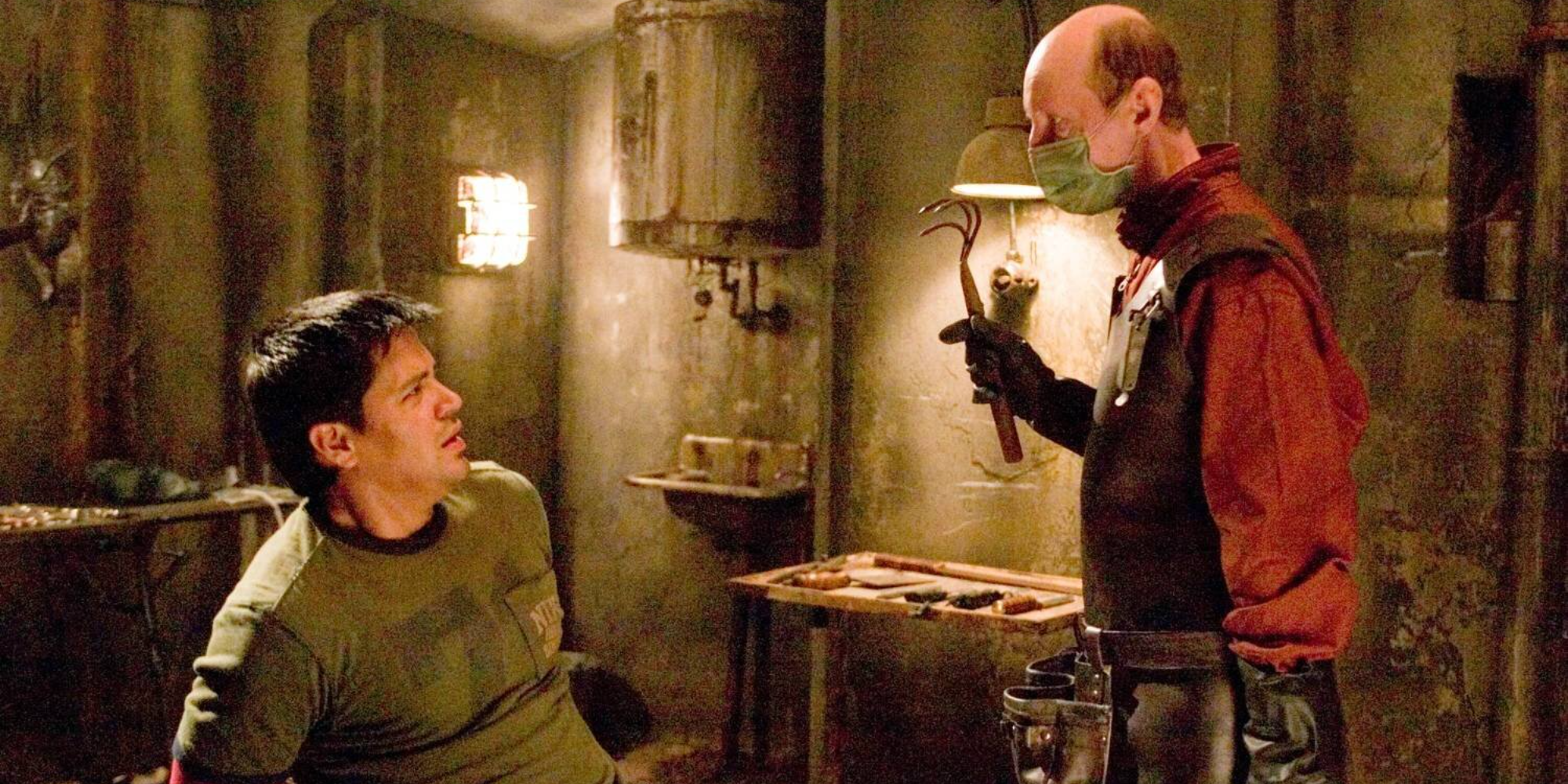The Big Picture
- Eli Roth’s film Hostel subverts horror tropes, killing off the audience’s potential survivor halfway through, creating disorientation and a sense of hopelessness.
- Hostel‘s careful attention to detail and deliberate storytelling choices make it stand out from other gore-filled films in its subgenre.
- Killing off a likable character like Josh early on ensures that Hostel remains a modern-day horror staple, pushing boundaries and disrupting audience expectations.
Eli Roth films are a staple of 21st-century horror, and his new movie Thanksgiving proves that he knows the genre inside out. Roth is renowned as one of the pioneers of the early 2000s “torture horror” subgenre, with his movies, including Cabin Fever and The Green Inferno, featuring extensive guts and gore. However, disregarding Eli Roth’s work as gore for gore’s sake means missing the intricate detail that allows his work to portray poignant commentary on both the horror genre and society itself. Nowhere is this more prevalent than in Hostel, a movie that, among the blood and guts, explores the reality of murder tourism and the problems with the survival tropes the genre has grown so familiar with. In the film, Josh (Derek Richardson) is the rational one of our three protagonists, acting as the audience surrogate. His apprehension juxtaposed with Paxton’s (Jay Hernandez) enthusiasm allows Josh to be perfectly painted as our potential survivor, which makes it all the more shocking when he dies early, jolting the entire film. This single story decision creates disorientation and hopelessness, a horror far greater than any of the gore on display.
Hostel
Three backpackers head to a Slovak city that promises to meet their hedonistic expectations, with no idea of the hell that awaits them.
- Release Date
- January 6, 2006
- Director
- Eli Roth
- Cast
- Jay Hernandez, Derek Richardson, Eythor Gudjonsson, Barbara Nedeljakova, Jan Vlasák, Jana Kaderabkova
- Rating
- R
- Runtime
- 95
- Main Genre
- Horror
Where Does ‘Hostel’ Take Place?
Hostel eases you in to its horrors, with the first torture scene not coming until the 30-minute mark. Before this, the movie spends time with Oli (Eythor Gudjonssen), Josh and Paxton as they explore Amsterdam and Slovakia. It becomes clear from his lack of screen time and one-dimensional persona that Oli is merely canon fodder, and his disappearance and death are not surprising. It is revealed he met Paxton and Josh on the road, so he merely feels like a vehicle for the plot. In contrast, it is evident that Josh and Paxton will play a much bigger role in the story. Paxton is portrayed as a fairly stereotypical college frat boy. He is enthusiastic about the group’s escapades, whilst often mocking Josh for not fitting in but still reassuring him that everything is going to work out. It is clear the two have a good relationship, but it is expected that Paxton will likely face the same fate as Oli and not survive until the end credits.
However, a lot of attention is taken to build up Josh’s character. His muddled apprehension allows him to become the audience surrogate, and we experience Amsterdam through his eyes. Particularly as the group enters a brothel, it is Josh we follow as he squirms at the sights and sounds with clear discomfort. The audience does not see what is beyond a door unless Josh opens it, so we become reliant on him for information. The story develops through Josh’s perspective, allowing empathy for his character to be earned and his viewpoint to be trusted. It is Josh who shows sympathy for the Dutch Businessman (Jan Vlasák) in the Slovakian club, but it is also Josh who notices his Elite Hunting Club tattoo. Everything we feel and everything we know is dictated by Josh’s actions.
The Scene That Made ‘Hostel’ So Successful
At the halfway mark of the movie, Eli Roth completely shifts the direction of Hostel in one scene. Josh is seen leaving the club, and Paxton passes out in a store cupboard. It is assumed this is the moment Paxton will die and Josh will be left to uncover the truth. The fade from black reveals two eye-shaped holes, restricting the audience’s view in the same way as the character waking up. Everything that has happened before leads the audience to believe that this is Paxton we are now following. We linger on this view for a long time, watching as the Dutch Businessman from earlier in the movie prepares his tools. When the hood is removed, seeing Josh is startling.
The logic of the movie should make it obvious it is Josh, as he has constantly been the audience’s eyes. Yet the rules of horror lead the audience to believe that Josh is our survivor and remove the possibility that he is in danger. This makes the whole sequence of his capture and sequential death devastating. This death happening so suddenly leads to disorientation. It is not just Paxton who has lost Josh, but the audience has as well. With half the runtime left, everyone is in the dark. All hope is gone for the audience, and the frustration about Josh’s death is replaced with bewilderment.
Who Survives ‘Hostel’?
Hostel subverts one of the most well-known horror tropes and consequently removes any sense of comfort and familiarity. Eli Roth is known for pushing boundaries with visceral imagery and gore, so the alternative ways he disrupts the genre can go unnoticed. The decision to make Paxton our sole survivor interrupts the whole tone of the movie. In contrast to the standard survivor who is modest yet capable, Paxton is indulgent and self-important. Upsetting the norm means, as an audience, we lose hope for his survival. Josh was the audience’s self-insert into the movie. With him gone, Roth effectively portrays the disorientation and sense of finality of being captured by the Elite Hunting Club. The rule book is gone and there are no expectations, therefore there is a feeling of inevitable tragedy. This makes the last half of Hostel extremely anxiety-inducing and difficult to stomach. Had Paxton died at the halfway mark, Josh’s survival would have been predictable. Flipping this broke the formula, leaving Paxton’s fate uncertain and proving Hostel transgressed the rules of horror.
If you ask most people what they remember about Hostel their likely answer will mention the extremity of the violence and gore — the endurance of sitting through extensive torture sequences where helpless victims have no chance of escape. However, there are many films of the early 2000s that feature excessive bloodshed that do not have the same notoriety as Hostel. That could be because Hostel has something that other movies in its subgenre lack, and that’s a result of the meticulous attention to detail Roth takes in his movies. Everything we see in Hostel is done with intention, even the scenes surrounding the blood and guts. The decision to kill Josh halfway through leaves the audience completely in the dark and ensures the second half of the movie omits any false sense of security. On initial viewing, the jolt of Josh’s early death may mean the importance of this moment if overlooked and instead played off as a decision made purely for shock value. Yet, this is the single most important moment of the whole movie. Hostel is successful because it pushes boundaries and killing off its most likable character halfway through ensured it stood the test of time, cementing it as a modern-day horror staple.
Hostel is available to stream on Amazon Prime in the U.S.
Watch on Amazon
Source link



